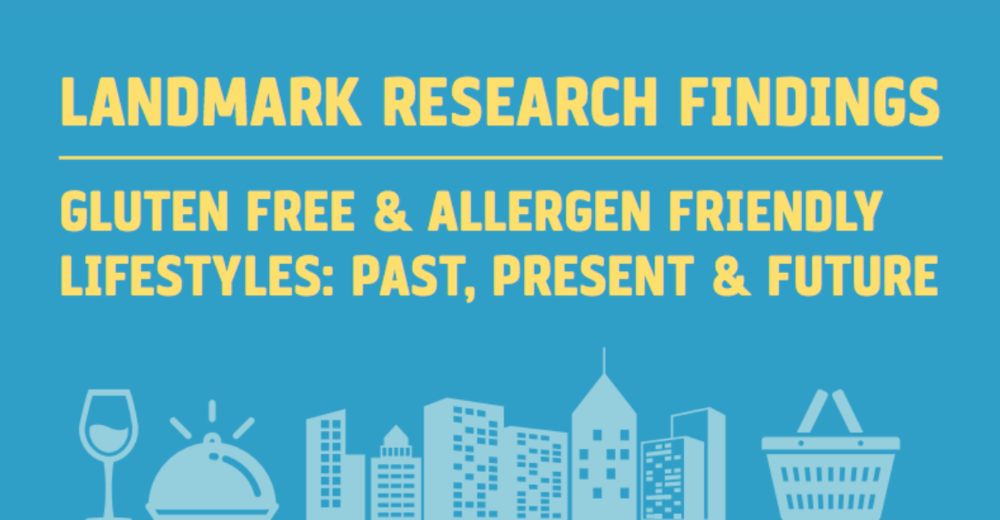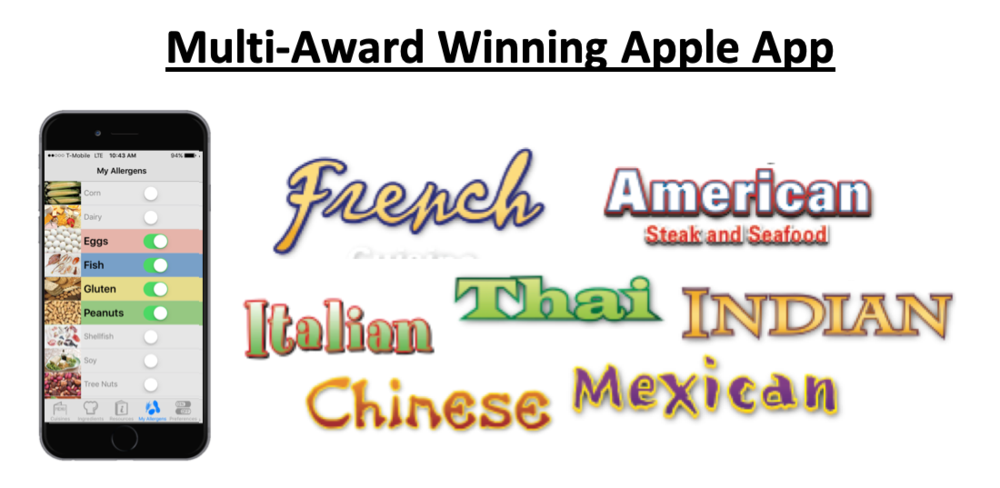Food Labeling by Region
We have seen great improvement on a global basis in recent years with regard to food product labeling. These advances have been welcomed by the growing community of individuals impacted by celiac / coeliac, food allergies, diabetes and special diets around the world.
When traveling at home and abroad, always be aware of the local labeling regulations. We have outlined some of the major global movements below to help you in your healthy and safe travels anywhere.
History of Food Labeling Regulations
In 2002, the Food Standards Australia New Zealand (formerly the Australia New Zealand Food Authority) declared “all food labels will show declarations of the presence of potential allergens in foods such as gluten, wheat, peanuts & other nuts, seafood, milk, eggs & soybeans. In addition, all foods containing genetically modified materials must be labeled as such.”
 In 2005, the European Union Directive on product labeling required manufacturers to identify 12 common food allergens including: gluten, wheat, celery, dairy, eggs, fish, mustard, peanuts, sesame seeds, shellfish, soy, tree nuts and their derivatives.
In 2005, the European Union Directive on product labeling required manufacturers to identify 12 common food allergens including: gluten, wheat, celery, dairy, eggs, fish, mustard, peanuts, sesame seeds, shellfish, soy, tree nuts and their derivatives.
As of 1/1/2006, the US Food Allergen Labeling and Consumer Protection Act (FALCPA) went into effect. The presence of eight allergens including: wheat, dairy, eggs, fish, peanuts, shellfish, soy and tree nuts are declared on ingredient lists.
 On 8/2/2013, the Food and Drug Administration (FDA) issued a ruling that officially sets the safety standard to label a product gluten-free in the U.S. which contains fewer than 20 parts per million of gluten.The FDA standard is consistent with the Codex Alimentarius labeling guidelines set by the World Health Organization.
On 8/2/2013, the Food and Drug Administration (FDA) issued a ruling that officially sets the safety standard to label a product gluten-free in the U.S. which contains fewer than 20 parts per million of gluten.The FDA standard is consistent with the Codex Alimentarius labeling guidelines set by the World Health Organization.
This ruling helps consumers in the U.S. managing a gluten-free diet safely navigate grocery store aisles in search of safe foods, as well as restaurants and those in the hospitality industry understand and identify gluten-free ingredients.
Outside of the U.S., there are also differences in the definition of the term “gluten-free”, and which foods are considered gluten-free.
Australia and New Zealand
According to The Coeliac Society of Australia, “there are two types of foods suitable for those requiring a gluten-free diet:
-
Foods labeled gluten-free
-
Foods made for the general market which are gluten free by ingredient
To be labeled gluten-free in Australia and New Zealand, a food must contain “No Detectable Gluten’ by the most sensitive universally accepted test method. At the time of the printing of the Ingredient List, testing can achieve a detection level of 0.0005 (5 parts per million). If gluten is not detected then the food can be labeled gluten free.”
What makes matters more complex is that, “some ingredients (i.e. glucose syrup, dextrose and caramel colour) are so highly processed that when tested, the results have always shown ‘no detectable gluten,’ even if derived from wheat,” according to The Coeliac Society of Australia. Therefore, these common ingredients derived from wheat are rendered gluten-free, even though gluten is declared on the product label.
 So, you can buy a product that indicates that it is gluten-free and also states on the label that ingredients included in the product are derived from gluten containing grains.
So, you can buy a product that indicates that it is gluten-free and also states on the label that ingredients included in the product are derived from gluten containing grains.
While in Australia & New Zealand, The Coeliac Society of Australia advises, “the label gluten-free overrides the product’s ingredient listing & products with statements such as 'may contain wheat or gluten' should be avoided.”
European Union and United Kingdom
The European Union follows a different standard and is guided by the Codex Alimentarius, managed by the Food and Agriculture Organization of the United Nations (FAO) and the World Health Organization (WHO).
In 1981, the standard for gluten-free labelling was set at a level of 200 mg gluten/kg or 200 parts per million (ppm). This standard was changed in July 2008 to a dual standard, which will provide safer limits overall, and allows a clear choice of products for people with celiac / coeliac disease.
As explained by Coeliac UK,the Codex standard now has two categories:
-
Foods containing less than 20 ppm gluten
-
Only foods that contain less than 20ppm can be labelled as 'gluten-free'.
This may apply to specialist substitute gluten-free products like breads, flours and crackers as well as naturally gluten-free mainstream products like soups, baked beans and crisps. The ‘gluten-free’ labelling may also be used for pure, uncontaminated oat products.
 1. The term ‘gluten-free’ implies no gluten, but in practice a zero level does not exist. It is impossible to eat a zero gluten diet, because even naturally gluten-free cereals such as rice can contain up to 20 ppm or 20mg/kg of gluten. Research shows that this tiny amount of gluten is not toxic to people with celiac / coeliac disease who can eat unlimited amounts of products with gluten at a level of less than 20ppm.
1. The term ‘gluten-free’ implies no gluten, but in practice a zero level does not exist. It is impossible to eat a zero gluten diet, because even naturally gluten-free cereals such as rice can contain up to 20 ppm or 20mg/kg of gluten. Research shows that this tiny amount of gluten is not toxic to people with celiac / coeliac disease who can eat unlimited amounts of products with gluten at a level of less than 20ppm.
2. Specialist substitute products (such as breads and flour mixes) that contain Codex wheat starch with a gluten level above 20 and up to 100ppm may be labelled as ‘very low gluten’.
The European Commission has decided to use the new Codex standard as the basis for a law on the labelling of food for people who are gluten intolerant. The law came into effect in January 2009 but manufacturers have until January 2012 to comply with the law allowing time for manufacturers to make all necessary changes to product ranges and labels.
 Canada
Canada
According to the Canadian Celiac Association, “gluten-free in Canada means that the food does not contain wheat, spelt, kamut, rye, barley, oats or triticale, or any parts thereof. In Canada, wheat starch is not permitted in a gluten-free diet.”
United States
 On August 2, 2013, the Food and Drug Administration (FDA) ruled that to, “define the food labeling term “gluten-free” to mean that a food bearing this claim:
On August 2, 2013, the Food and Drug Administration (FDA) ruled that to, “define the food labeling term “gluten-free” to mean that a food bearing this claim:
-
Complies with the new FDA definition of gluten-free as less than 20 parts per millions (ppm) of gluten
-
Does NOT contain wheat, rye, barley or their crossbred hybrids like triticale (a gluten containing grain) OR
-
Contains a gluten-containing grain or an ingredients derived from a gluten-containing grain that has been processes to be less than 20 ppm
-
May be naturally gluten-free such as bottled water or tomatoes



 Remember, until there is a universal consensus on acceptable levels of gluten and standardization of definitions, product labeling of gluten-free and gluten-containing ingredients will continue to vary from country to country.
Remember, until there is a universal consensus on acceptable levels of gluten and standardization of definitions, product labeling of gluten-free and gluten-containing ingredients will continue to vary from country to country.


















